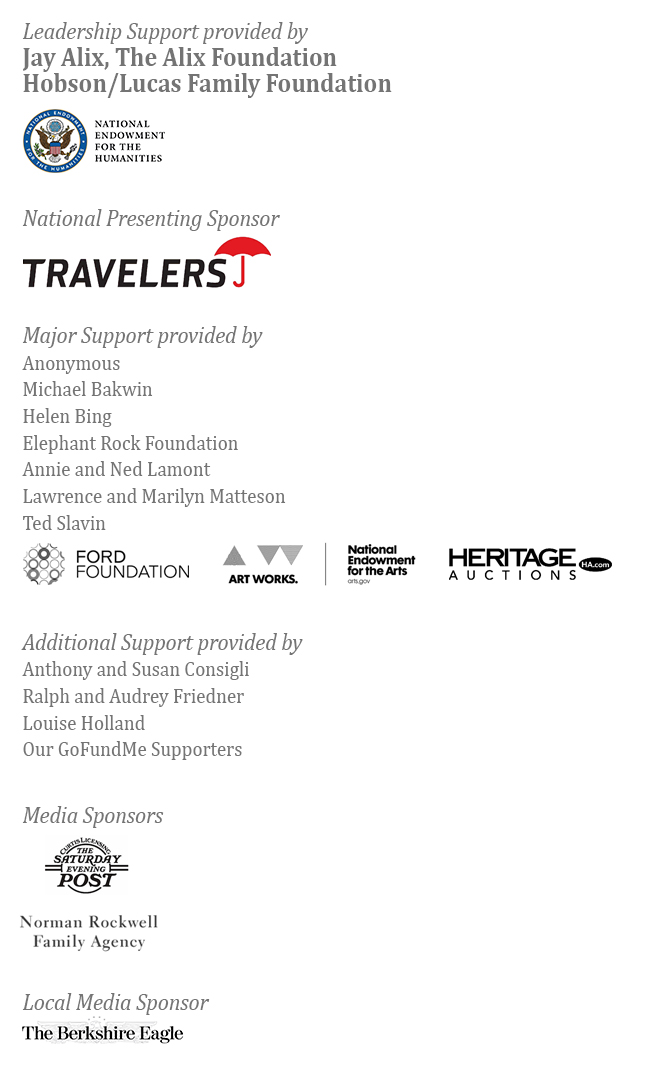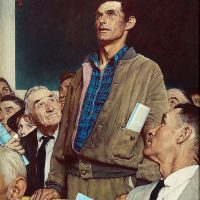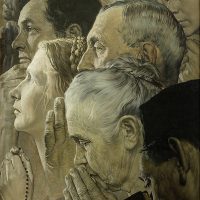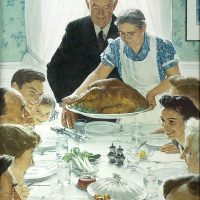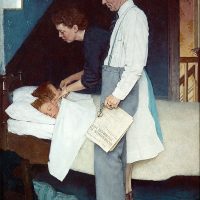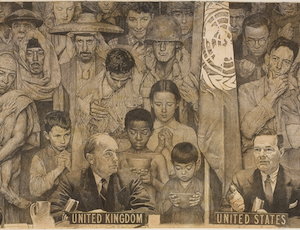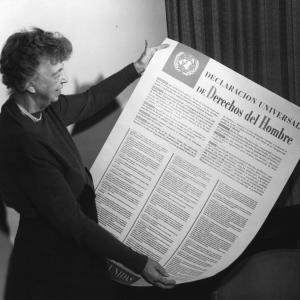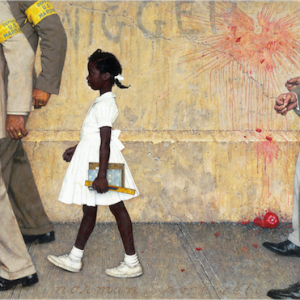Norman Rockwell: Imagining Freedom explores the indelible odyssey of humanity’s greatest ideals.
About the Exhibition
The power of images to shape cultural narratives is revealed in Norman Rockwell: Imagining Freedom, an exhibition that explores the legacy of the Four Freedoms as inspired by Franklin D. Roosevelt and portrayed by Norman Rockwell. Tracing the Four Freedoms journey from World War II to the Civil Rights movement of the 1960s and the call for freedom today, the exhibition inspires fresh consideration of our most pressing social concerns through the lenses of art and history, inviting us to consider how we can become allies in the creation of a more humane world.
Rockwell’s most iconic works are featured, including his Four Freedoms paintings, inspired by Franklin D. Roosevelt’s vision for a peaceful post-war world; The Golden Rule, the artist’s personal plea for unity; and his appeals for human rights in The Problem We All Live With and Murder in Mississippi. Also featured is the artist’s Presidential Medal of Freedom, presented by President Gerald R. Ford for Rockwell’s “vivid and affectionate portraits of our country,” and for portraying “the American scene with unrivaled freshness and clarity.”
The exhibition, which remains on view in part by popular demand following its seven-city tour, also features the art of Pops Peterson, who presents thought-provoking perspectives on freedom, justice, and democracy in our times as inspired by Rockwell.
The Four Freedoms in History
The notion of the Four Freedoms has inspired dozens of national constitutions across the globe, yet Franklin D. Roosevelt’s declaration that the United States was willing to fight for Freedom of Speech, Freedom of Worship, Freedom from Want, and Freedom from Fear—now considered a sublime moment in rhetorical history—did not turn out to be the immediate triumph envisioned by the President. As the nation found itself sliding ever closer to direct involvement in World War II, the underlying meaning of his words captured surprisingly little attention among Americans. Following his January 6, 1941, Annual Message to Congress, government surveys showed that only half of Americans were aware of FDR’s Four Freedoms and that less than a quarter could identify them correctly. Moreover, many had no clear idea why the United States was being called upon to enter the war.
It would take the continuous efforts of the White House, the Office of War Information, and scores of patriotic artists to give the Four Freedoms new life. Most prominent among those was Norman Rockwell, whose images became a national sensation in early 1943 when they were first published in The Saturday Evening Post. Roosevelt’s words and Rockwell’s artworks soon became inseparable in the public consciousness, with millions of reproductions publicizing the Second War Loan Drive bringing the Four Freedoms directly into American homes and workplaces. When Eleanor Roosevelt convinced United Nations delegates to include these ideals in its postwar statement of human rights, FDR’s words—now forever entwined with Rockwell’s images—achieved immortality.
Born amid the turmoil of World War II, the Four Freedoms have since become one of its greatest legacies, a testament to the paramount importance of human rights and dignity. Brought forward by one of America’s greatest presidents and immortalized by one of its most beloved artists more than seventy-five years ago, the Four Freedoms continue to inspire, resonating across generations as strongly today as they did in their time.
This exhibition is divided into five sections, you can learn more about each below:
- – The War Generation
- – Roosevelt’s Four Freedoms
- – The Artistic Response
- – Rockwell’s Four Freedoms
- – Freedom’s Legacy
Norman Rockwell: Imagining Freedom is an exhibition organized by Norman Rockwell Museum, Stockbridge, MA.
Rockwell's Four Freedoms
In the spring of 1942, Norman Rockwell was working on a piece commissioned by the Ordnance Department of the US Army, a painting of a machine gunner in need of ammunition. Posters featuring Let’s Give Him Enough and On Time were distributed to munitions factories throughout the country to encourage production. But Rockwell wanted to do more for the war effort and determined to illustrate Roosevelt’s Four Freedoms. Finding new ideas for paintings never came easily, but this was a greater challenge.
While considering his options, Rockwell by chance attended a town meeting where a Vermont neighbor was met with respect when he rose among his neighbors to voice an unpopular view. That night he awoke with the realization that he could best paint the Four Freedoms from the perspective of his own experiences, using everyday scenes as his guide. Rockwell made some sketches and, accompanied by fellow Saturday Evening Postartist Mead Schaeffer, went to Washington to propose his ideas.
LEARN MORE >
Image credits:
Freedom of Speech, Norman Rockwell. 1943. ©SEPS: Curtis Publishing, Indianapolis, IN.
Freedom of Worship, Norman Rockwell. 1943. ©SEPS: Curtis Publishing, Indianapolis, IN.
Freedom from Want, Norman Rockwell. 1943. ©SEPS: Curtis Publishing, Indianapolis, IN.
Freedom from Fear, Norman Rockwell. 1943. ©SEPS: Curtis Publishing, Indianapolis, IN.
“The Four Freedoms are so darned high-blown. Somehow I just couldn’t get my mind around it.” Norman Rockwell
Freedom’s Legacy
President Roosevelt made clear that the Four Freedoms were “no vision of a distant millennium.” Their odyssey did not end with FDR, nor with Rockwell.
As World War II came to a close, the Allies began to hold planning meetings for what would become the United Nations. Eleanor Roosevelt, who championed the late president’s legacy, ceaselessly touted FDR’s freedoms as an appropriate summation of democracy and human rights, and war weary nations agreed. Enshrined in the 1948 Universal Declaration of Human Rights, the Four Freedoms are a testament and an inspiration that arose from the ashes of war to affirm the precious nature of freedom everywhere in the world.
LEARN MORE >
Image credits:
United Nations, Norman Rockwell. 1953. ©Norman Rockwell Family Agency.
Eleanor Roosevelt and the Universal Declaration of Human Rights, 1948. United Nations / FDR Library & Museum / National Archives
The Problem We All Live With, Norman Rockwell. 1964. Norman Rockwell Family Agency.
Sponsored by:
